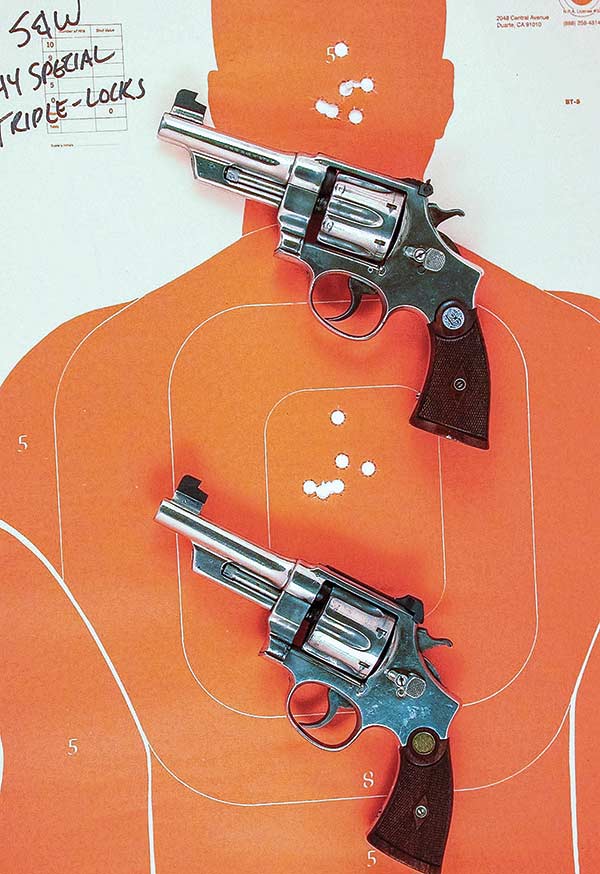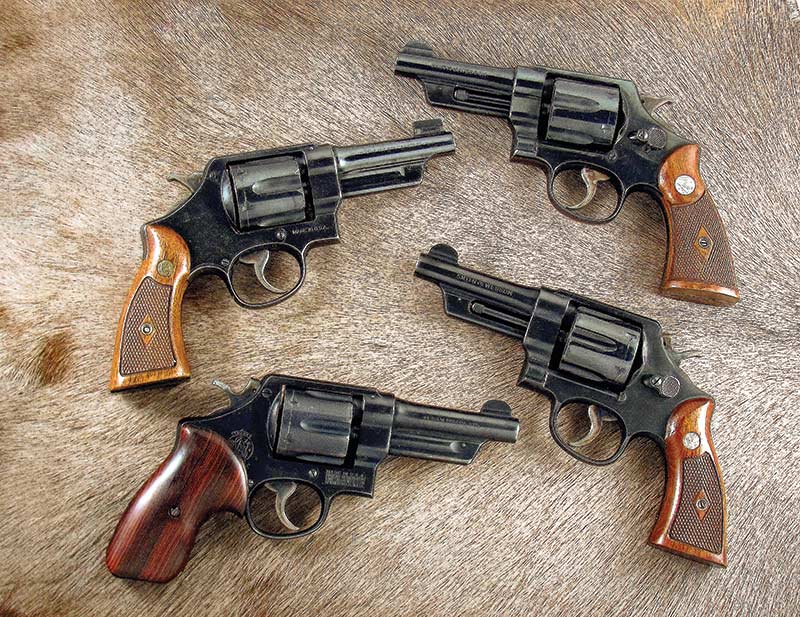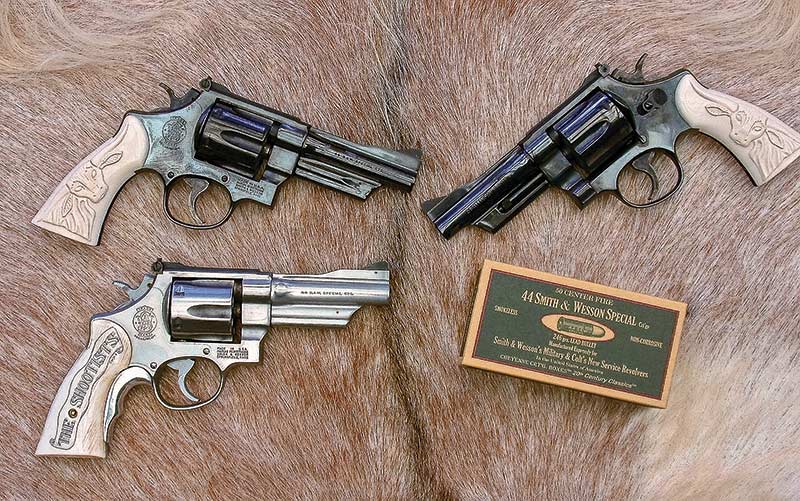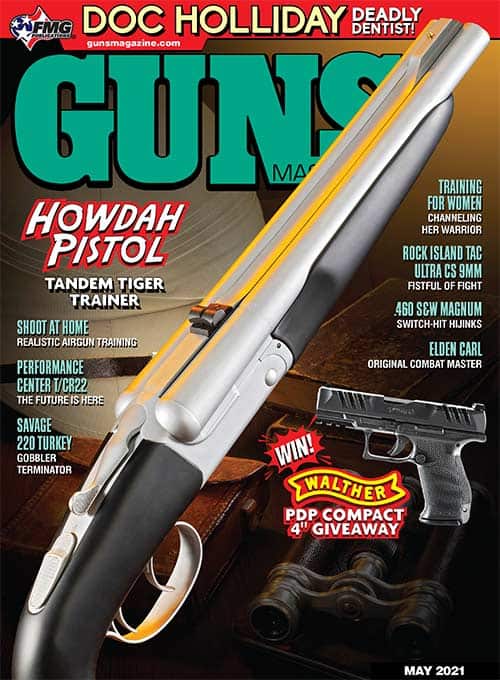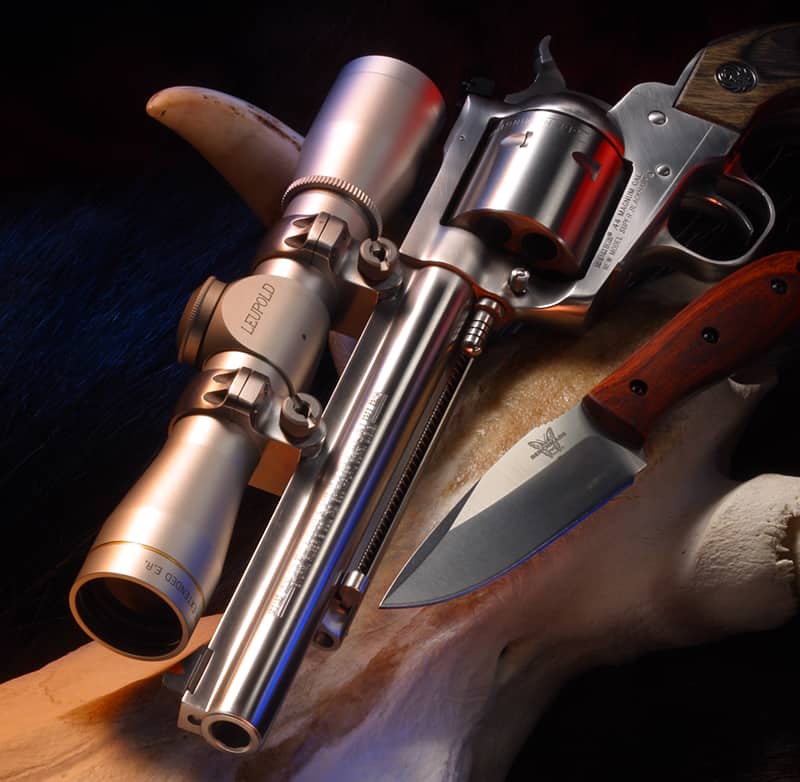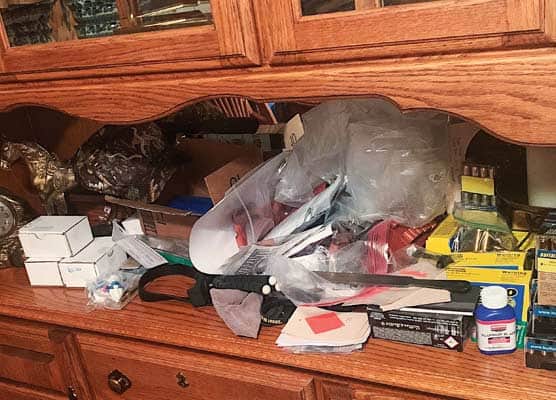Best Of The Best
This revolver is still often referred to as the finest double action sixgun to ever exit from Smith & Wesson or anyplace else. The ammunition was another matter. With this large framed, very strong revolver, the .44 Russian with its 246-grain round-nosed bullet at 750 fps could have been greatly improved. Instead, in spite of the longer case, the .44 Special duplicated the ballistics of the .44 Russian. It would take experimenters like Elmer Keith and the .44 Associates to bring the .44 Special closer to perfection.
In the late 1920s Keith began writing about the .44 Special, designing a new cast bullet, the 250-grain semi-wadcutter Lyman/Ideal #429421. It is still a favorite bullet with many handloaders of both the .44 Special and .44 Magnum.
The Triple-Lock was offered in both fixed-sight and target-sighted models and three standard barrel lengths of 4", 5" and 6-1/2". I have two 4" versions, both of which are nickel-plated and were rescued from the bone pile. One was an original Target Model that someone had very poorly cut back to 4" and the other was originally a fixed-sighted version someone had cut a channel for an adjustable sight on the top strap. My gunsmith went to work and installed a modern S&W adjustable rear sight on the former and a Dave Lauck rear sight on the latter. They are both now totally usable though not original, making them excellent PPPs.
The Triple-Lock only lasted until 1915 when it was removed from production and replaced by the 2nd Model without the third lock or the enclosed ejector rod, thus saving the purchaser $2. A measly $2 killed a grand sixgun! It wasn’t long before shooters started asking for a return of the Triple Lock. This never happened but in 1926 Fort Worth gun dealer Wolf & Klar placed a large order with Smith & Wesson for what would become the 3rd Model Hand Ejector. The third lock was not returned, however the enclosed ejector rod was back.
